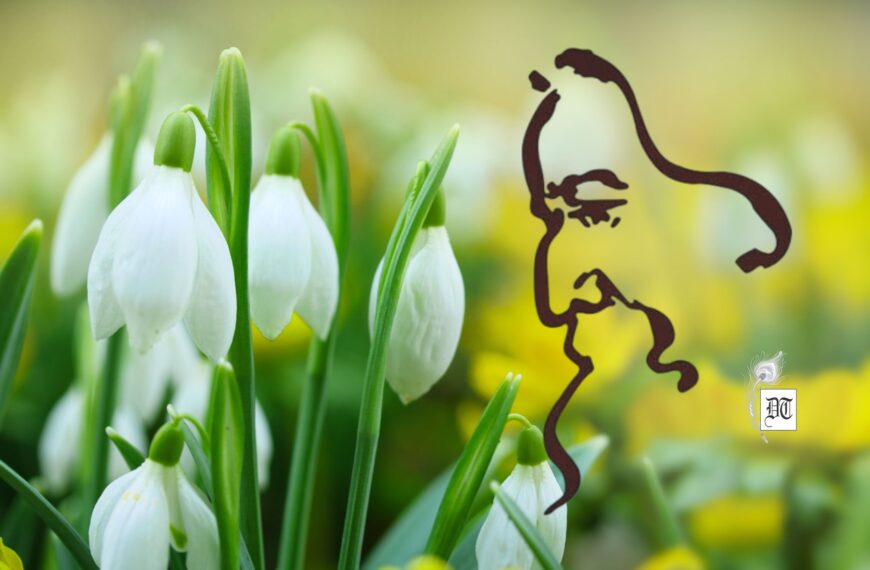Bengali filmmakers have incorporated Rabindranath Tagore’s music into their narratives, enhancing emotional depth and resonance, opines Ruchira, exclusively for Different Truths.

Regarding the making of music for their films, Bengali (and Banglophone) directors are spoilt for choice. The moment they wish to select popular, well-known songs to create a kaleidoscope of moods and emotions for characters in their ‘upcoming’ movies, they can easily have a piggyback ride on Tagore. Yes, Tagore is perennially there with his humongous collection of lyrics and songs—with a vast range of themes—which the music and cultural world knows as Rabindrasangeet.
If living memory is to be trusted, the first-ever use of Tagore’s songs on celluloid was in Mukti (1937), starring the legendary Pramathesh Barua and the iconic singer-actress Kanan Devi. The songs were Ami kaan pete roi and Aaj shobar rong meshate hobe.
Another almost contemporary film, Daktar (1940), featuring noted singer Pankaj Mallik in the lead role, contains the song Ki paaini. This film is the precursor of the later bilingual Anand Ashram. Yet another sensational flick of that era, Priya Bandhabi, has a poignant soulful number, Pather shesh kothai sung by Hemanta Mukherjee, which remains a hit.
Movie buffs are unlikely to forget Ami chini go chini from the Satyajit Ray masterpiece Charulata (1964), sung by Kishore Kumar. We have two cheerful comedies, Lukochuri (1958) and Ektuku chhowa laaage (1965), in which the playful frivolous hero—none other than Kishore Kumar himself—lips two romantic numbers the eponymous song and Maya bono biharini (with Ruma Guhathakurta). One of Tagore’s earlier romantic novels, Bouthakuranir haat (1953), incorporated two of the Bard’s songs, viz., Sawana gagane ghor ghana ghata (Lata) besides Gram chhara oi rangamatir path (Hemanta).
In the Biswajit-Sandhya romantic thriller Kuheli (1971), Hemanta and Lata sing a delightful duet, Tumi rabe nirabe. In the same film, Asha Bhonsle sings Megher kolay rowd heshechhe.
In Anindita, (1972), we have Hemanta Mukherjee, the maestro,singing Diner Sheshe ghumer deshe… Thesad, languorous tone of the song heightened the film’s appeal. Sriman Prithviraj (1973) is a light-hearted, kid-friendly comedy. Therein we have two female characters voicing Sakhi Bhavana Kahare Bole (Lata & Kavita Krishnamurthy).
One of Uttam Kumar’s later masterpieces, Agnishwar (1975), imbibes purano shei diner kotha (original: Scottish Auld lang Syne), sung by Hemanta. The occasion is a reunion wherein a liberal rebel, Dr Agnishwar Mukherjee, meets up with his close friends and batchmates from his medical college days.
Uttam Kumar had also given a stellar performance in Chowringee (1968). The story revolves around ‘Sata’ Bose, a senior receptionist in one of Kolkata’s deluxe hotels; he is in love with Sujata Mitra (Anjana Bhowmik), an air hostess—a regular guest at the hotel—who dies an untimely, tragic death. The movie as well as the song Ei kotha ti monay rekho (Sujata /Pratima Banerji)remained etched in the viewers’ minds for decades.
Another Uttam Kumar hit Bikele bhorer phool (with an uncanny resemblance to Vladimir Nobokov’s controversial novel and film Lolita) has two charming songs, Ki gabo ami (Arati) and Aamaar sokol rosher dhara. (Hemanta & Arati Mukherjee).
Mahashweta, released in 1967, uses the solemn Aguner porosh moni, which exhorts “Man” to ennoble and uplift his soul, his very being through supreme sacrifice. Sung by Hemanta and another stalwart, Suchitra Mitra, the song is a masterpiece!
In the Utpal Dutt-Moon-moon Sen starrer Rajbodhu (1982), Hemanta teams up with Arundhati Holme Choudhury to deliver Boro asha kore eshechi go. In the 1980s Ray again used a Tagore song in the slightly controversial Ghare Baire. Sandeep (played by Soumitra Chatterji), the feisty patriot, expresses his angst against ‘British’ atrocities by singing Bidhir bandhon kaatbe tumi (Kishore).
And very recently (2008), we have a mournful song aaache dukho aache mrityu (Srikanta Acharya) in the film Chalo let’s go.
Aficionados of Bollywood movies are pretty much aware of how some noted directors have borrowed Rabindrasangeet tunes and set them to Hindi lyrics. Two conspicuous examples are “tere mere milan ki yeh raina” (jodi taare nai chini go) and choo kar mere man ko (tomar holo shuru).
This list is by no means exhaustive. There might be many more such flicks that have passed into oblivion and are no longer in circulation.
Summing up, extensive use of Rabindrasangeet in cinema is a fairly good idea. It lightens the workload of music directors. More importantly, it helps to popularise the poet’s musical creations and perpetuate them for posterity.
Picture design by Anumita Roy






 By
By

